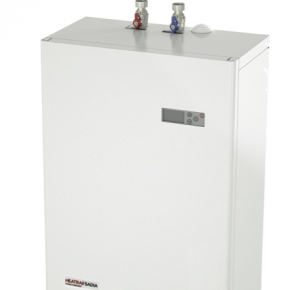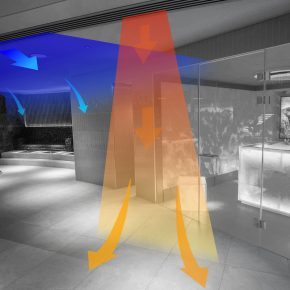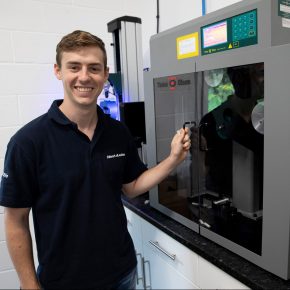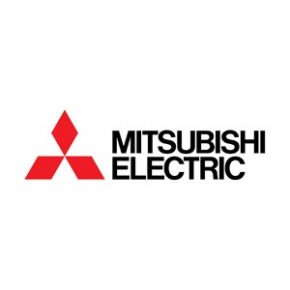
Sharing the warmth
Ethan Thompson, product manager at Heatrae Sadia explains what you need to know about selecting products for a heat network in the latest issue of ABC&D Magazine.
Communal heating is becoming increasingly popular for developments with multiple dwellings, but what do architects need to know when it comes to specifying these schemes, and what should they look out for when selecting products for a heat network?
Communal heating schemes (sometimes referred to as community heating, district heating or heat networks) provide heat to individual properties from a centralised plant through a distribution network.
In recent years, the concept has become more widely adopted, particularly in multi-occupancy high rise schemes such as apartment blocks. In these developments, centralised schemes can offer benefits over the more traditional solution of installing separate heating systems in each individual property.
In particular, efficiencies can be increased and fuel consumption can be reduced. In fact, compared to alternative solutions, centralised plant systems are particularly well- positioned to help developers meet their required targets in a cost-effective way.
Using a centralised plant also decreases the risks linked to gas distribution pipework and eliminates the need to fit numerous flue terminals and plume displacement and condensate drainage systems, potentially reducing capital installation costs, depending on the size of the development.
Heat interface units (HIUs), also known as heat boxes, will generally be used to provide the heating, or heating with domestic hot water, to individual properties, with the householder controlling their use of heat with either a room thermostat, a separate programmer or individual thermostatic radiator valves.
When using a central boiler plant and HIUs, cascade systems can be considered within the design, supporting more efficient systems and lower return temperatures. In all cases, the boiler plant must be capable of delivering peak space heating load. However, HIUs incorporating a plate heat exchanger for domestic hot water require special consideration, as generally there will be a significant difference between heating and hot water loads.
For example, heat loads for each dwelling could be in the region of 3-5kW, whereas 35kW or more is likely to be required for peak domestic hot water. For an economical and energy efficient solution to be achieved, appropriate coincidence factors need to be adopted so as to realise the benefit from the diversified load when determining plant capacity – in most cases this will involve consideration of the occupants’ lifestyles and typical use profiles.
There is certainly no one-size-fits-all solution. Indeed, the success of a communal heating scheme largely depends on it being sized and designed appropriately for the demand of the building, and whether both the peak and base loads have been properly considered.
If oversized, it won’t just be the central plant that is too large; inevitably, other elements such as the pipework, distribution pumps, expansion vessels and inhibitor volumes required to protect the system (to name just a few) will increase.
When selecting HIUs for a scheme, architects should look for independent third-party approvals to ensure that products comply with industry standards and regulations. For example, the NEMKO mark demonstrates that a product has been assessed for conformity to electrical safety legislation by a competent body, providing reassurance to the specifier and assisting compliance under CDM regulations. Meanwhile, independent testing for water fittings guarantees that products are safe to use and will guard against the contamination of potable water supplies. Here, the industry standard third-party certification is provided by WRAS or KIWA.
Some HIUs feature a compact design (to fit into a standard kitchen cupboard) and comprise two generously-sized plate heat exchangers – one for the hot water and one for the heating system. They are designed to ensure that the primary return temperatures going back to the centralised heating system are very low to maximise the operating efficiency of the system. PID controllers modulate flow to the units in order to optimise performance, working with the room thermostat. They are suitable for single and dual zone heating systems.
In recent times, there has been a trend towards centralised plant being used to deliver heating and hot water to individual properties in developments such as apartments and community housing. This approach offers many benefits, including increased efficiency and lower installation and maintenance costs, making them a suitable choice for architects working on multi-dwelling projects.
Latest news

1st April 2025
Gilberts Takes Thermal Comfort to New Heights
Gilberts Blackpool is continuing to build on its reputation as a pioneer with the unveiling of ThermaAstute™ – the most extensive range of thermally sensitive diffusers in the market.
Posted in Air Conditioning, Articles, Building Industry News, Building Products & Structures, Building Services, Facility Management & Building Services, Heating, Ventilation and Air Conditioning - HVAC, Innovations & New Products, Restoration & Refurbishment, Retrofit & Renovation, Sustainability & Energy Efficiency
1st April 2025
University of Bath Student Helps Vent-Axia Win Two Environmental Industry Awards
Leading ventilation manufacturer, Vent-Axia, is delighted that the valuable work University of Bath student Roben Els undertook during an industry placement at the company contributed to it winning two environmental industry awards.
Posted in Air Conditioning, Articles, Awards, Building Industry Events, Building Industry News, Building Products & Structures, Building Services, Heating, Ventilation and Air Conditioning - HVAC, Recruitment, Retrofit & Renovation, Sustainability & Energy Efficiency, Training
1st April 2025
Ahmarra: Fire Doors Designed for Hospitals & Healthcare Environments
Ahmarra is a leading UK specialist in fire doors for healthcare environments, having manufactured and installed thousands of bespoke doorsets for NHS hospitals across London and the South East.
Posted in Access Control & Door Entry Systems, Accessibility, Acoustics, Noise & Vibration Control, Architectural Ironmongery, Articles, Building Industry News, Building Products & Structures, Building Services, Building Systems, Doors, Facility Management & Building Services, Health & Safety, Interior Design & Construction, Interiors, Restoration & Refurbishment, Retrofit & Renovation, Security and Fire Protection, Timber Buildings and Timber Products, Wooden products
1st April 2025
Mitsubishi Electric: New intuitive, IoT-ready centralised controller offers instant access to 400 units
Mitsubishi Electric has launched a new user-friendly, touchscreen controller to offer full remote controllability, monitoring and reporting for up to 400 air conditioning units.
Posted in Air Conditioning, Articles, Building Industry News, Building Products & Structures, Building Services, Facility Management & Building Services, Heating Systems, Controls and Management, Heating, Ventilation and Air Conditioning - HVAC, Information Technology, Innovations & New Products, Pipes & Fittings, Plumbing, Posts, Research & Materials Testing, Retrofit & Renovation, Sustainability & Energy Efficiency
 Sign up:
Sign up: